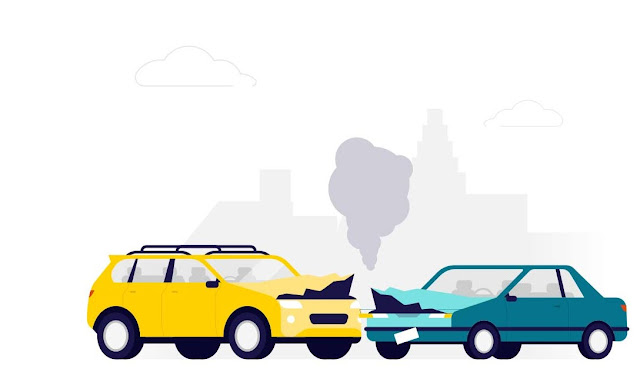Car Insurance Coverage Types Explained: The Ultimate Guide
Choosing car insurance can feel like navigating a maze blindfolded. With all the jargon, fine print, and different policies available, it’s easy to get lost in the details. But I’m here to tell you that it doesn’t have to be that hard. Trust me I’ve been there. In fact, I once spent hours going back and forth between different policies, comparing coverages, and wondering if I was making the right choice. Now, with a little research under my belt and some trial and error, I can confidently say that understanding car insurance coverage types isn’t rocket science. Let’s break it down together, shall we?
What Is Car Insurance, Really?
First things first: let’s cover the basics. Car insurance is essentially a contract between you and an insurance company. You pay a premium, and in return, they agree to cover certain costs in the event of an accident, theft, or other damages. Sounds simple, right? Well, sort of. But the devil is in the details. What kind of damages are we talking about? And which costs exactly will the insurance company cover?
That’s where coverage types come into play. The trick is figuring out which coverage you need and which you don’t so you’re not overpaying for unnecessary protection, or worse, leaving yourself vulnerable when something goes wrong. Let’s dive into the different types of car insurance coverages you’ll encounter and what each of them actually means for you.
Car Insurance Coverage Type
1. Liability Coverage
If there’s one type of car insurance coverage you’re likely familiar with, it’s liability coverage. In most states, it’s the bare minimum you’re required to have by law. But what does it cover exactly? In short, it helps pay for the other person’s expenses if you’re at fault in an accident. This could be their medical bills, repairs to their vehicle, or even legal fees if they decide to sue you. Pretty important stuff, huh?
Liability coverage is split into two parts:
- Bodily injury liability: This pays for medical expenses, lost wages, and even funeral costs for the other driver and their passengers.
- Property damage liability: This covers the repair or replacement of the other party’s vehicle, or any other property you might damage in the accident (like, let’s say, a fence or a mailbox).
Now, while liability coverage is mandatory, the limits vary by state. But here's the catch: just because the state minimum might be enough to keep you legal, it doesn’t necessarily mean it’s enough to keep you protected. If you cause a major accident, those medical bills can skyrocket, and you don’t want to be stuck paying out-of-pocket for anything beyond your coverage limits.
2. Collision Coverage
Ah, collision coverage this one’s a lifesaver. Picture this: you’re driving home from work, and out of nowhere, you rear-end someone at a stoplight. Ouch, right? Collision coverage is what helps pay for repairs to your own car after an accident, whether it’s a fender bender or something more serious.
Now, this is an optional coverage, and if you’re driving an older car, you might be tempted to skip it to save on premiums. I get it who wants to pay extra for insurance, especially if your car isn’t worth much? But here’s the thing: if your car is still worth a decent amount, and you’d be in trouble if it suddenly got totaled, collision coverage can really come in handy.
3. Comprehensive Coverage
This is one of those terms that sounds way more complicated than it is. Comprehensive coverage is essentially protection against things that are outside your control. If your car gets damaged by something other than a collision like a tree falling on it, a hailstorm, or even theft comprehensive coverage has your back. Think of it as a kind of “everything but the kitchen sink” policy.
Read Also:
Cheap Auto: Your Ultimate Guide to Affordable Car Ownership
Cheap Auto Insurance Online: My Journey to Affordable Coverage
I once had a friend whose car was vandalized while it was parked overnight. She didn’t have comprehensive coverage, so guess who ended up paying for all the repairs? You guessed it her. And it wasn’t cheap.
4. Personal Injury Protection (PIP)
Personal Injury Protection, or PIP, is a type of coverage that pays for your medical expenses, regardless of who’s at fault in the accident. It can also cover lost wages and other related costs, like childcare if you’re unable to work due to your injuries. PIP is required in some states, but even if it’s not, it’s definitely worth considering especially if your health insurance has high deductibles or doesn’t cover accident-related injuries.
I remember reading a story about a guy who got into a minor accident and thought, “No big deal, I’m fine.” A few days later, though, he started having severe neck pain, and the medical bills started piling up. PIP could’ve saved him from a lot of out-of-pocket expenses.
5. Uninsured/Underinsured Motorist Coverage
Let’s face it not everyone on the road is as responsible as you. There are plenty of drivers out there without insurance or with coverage that’s too low to cover the damage they might cause. That’s where uninsured/underinsured motorist coverage steps in. It helps cover your costs if you’re hit by someone who doesn’t have insurance or doesn’t have enough to pay for your damages.
It’s a bit like having a safety net. No one wants to think about the worst-case scenario, but when you do, you’ll be glad you have this coverage in place.
6. Gap Insurance
Ever heard of gap insurance? If you’ve taken out a loan or are leasing a car, this might be something you want to consider. Gap insurance covers the difference between what you owe on your car and its current market value if it’s totaled.
For example, let’s say you’re in an accident, and your car is totaled. Your insurance might only cover the car’s depreciated value, but you still owe more on the loan than that. Without gap insurance, you’d be stuck paying off the remainder of the loan out-of-pocket.
I learned this the hard way when my cousin totaled his new car just a few months after buying it. The insurance payout wasn’t enough to cover what he owed, and he had to come up with the rest. If only he had gap insurance, right?
The Right Coverage for You
At the end of the day, the type of car insurance coverage you need depends on your personal situation—your car, your budget, and your level of risk tolerance. If you’re driving a brand-new vehicle, you’ll probably want to go for comprehensive and collision coverage. If your car is on its last legs, maybe just liability is enough. And if you live in an area prone to natural disasters, comprehensive coverage could save you a lot of headaches.
The key is to find that sweet spot where you’re adequately covered without overpaying for coverage you don’t need.
So, there you have it car insurance coverage types explained in a way that, hopefully, makes a little more sense. Whether you’re renewing your policy or shopping for a new one, the most important thing is to make sure you’re covered where it counts. Take it from someone who’s been down this road before: it pays to understand your options and make an informed decision. Don’t just go for the cheapest option, and don’t be afraid to ask your insurance agent a ton of questions. After all, the peace of mind that comes with knowing you’re properly insured is worth every penny.
Oh, and one last thing don’t forget to review your policy regularly. Life changes, and so do your insurance needs. Stay ahead of the game, and you’ll be driving with confidence, knowing that you’ve got the right coverage in place for whatever comes your way.





